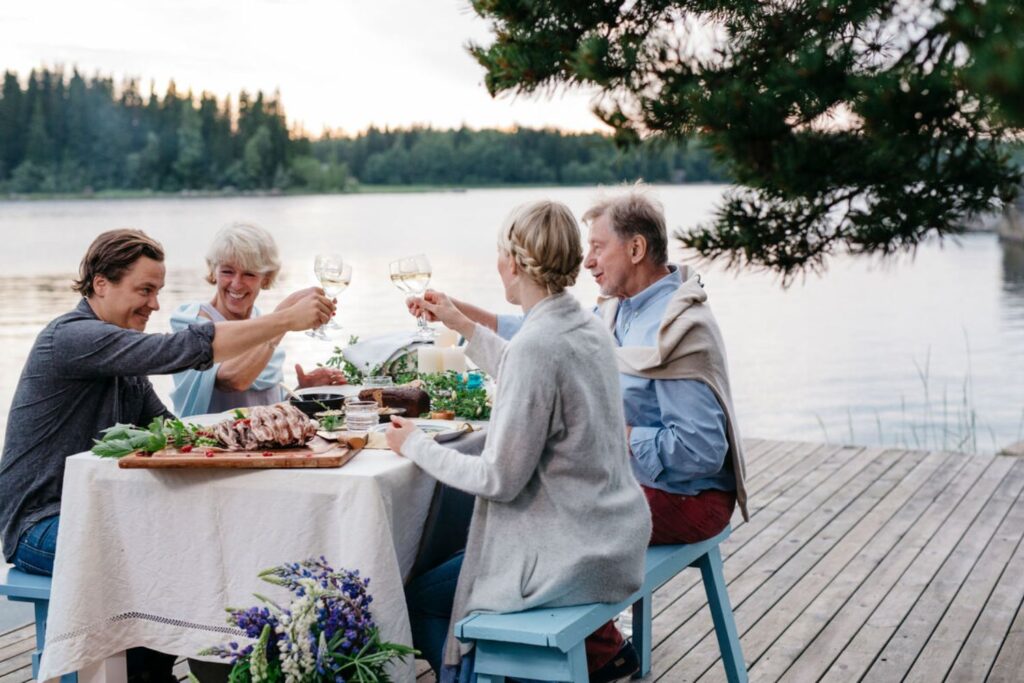
By Tim Bird
Tim Bird is a freelance writer and photographer based in the Finnish capital, Helsinki. Over several decades, he has written about all aspects of Finland, the other Nordic countries and the Baltic region, including sustainable travel issues. He has also won many awards for his travel photography.
I’m looking out of my window in Helsinki just after Christmas at a fabulous frost-bound fantasy. The boughs of the birch tree in our yard are drooping under heavy snow and a knee-deep carpet of white extends to the street. An enormous hare, its fur turned seasonally pale, is nibbling at the seeds I’ve scattered for the birds. The thermometer at the window reads minus 15C, supporting the impression of perpetual winter, in which nothing edible – apart perhaps from that ample hare – could ever grow here again.
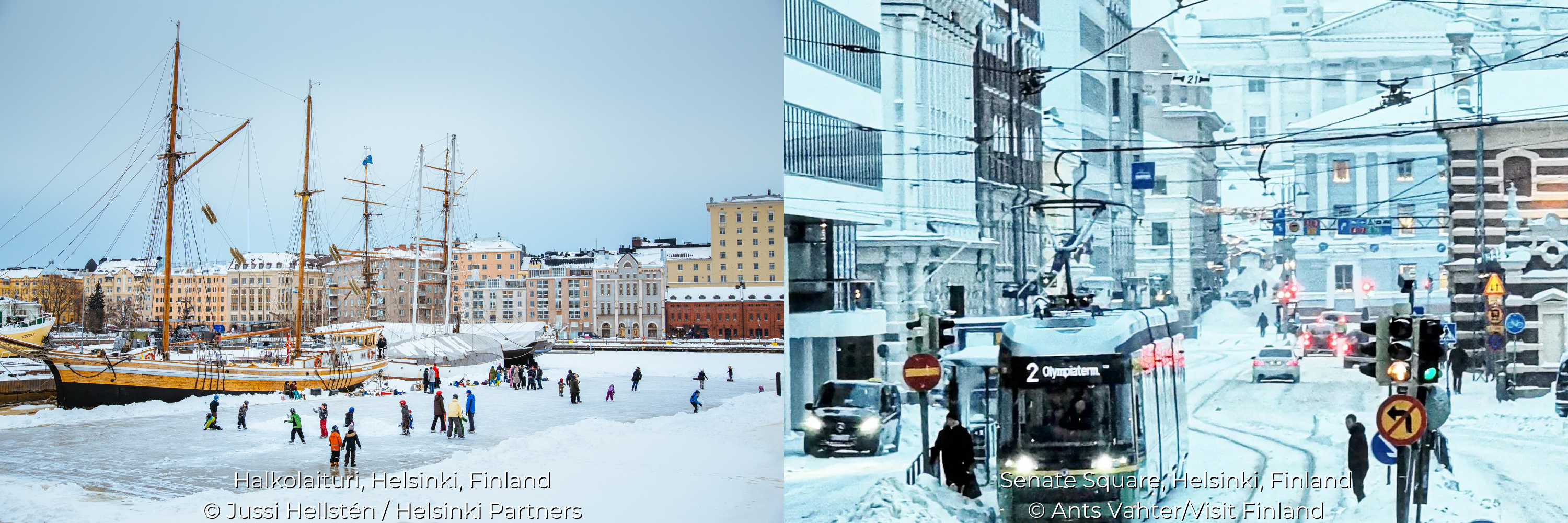
I’ve lived here long enough to enjoy the spectacle in the confident knowledge that spring will bring a swift and total transformation – and with it, a trove of edible riches. The long light-drenched summer days, when the sun hovers just below the horizon at midnight in Helsinki and the south and never sinks below it in the Polar north, provide their own special benefits for natural and nurtured food production. Clean and plentiful fresh water combined with equally clean air and fertile soil means that food production in Finland, farmed and wild, is highly sustainable.
Keen to explore the wonders of Finland for yourself? On this 11-day trip, you’ll explore Finnish Lapland, Riisitunturi National Park, and Posio. You’ll stay in sustainable accommodation and discover the unique art of the Pentik Ceramics Centre, visit the Ylitalo Reindeer Farm, and enjoy a sustainable husky safari.

I’m grateful that international cuisine of all descriptions, representing every region, is widely available, especially in towns and cities. For the most part, these offerings can happily draw on local resources, too. But no visit would be complete without sampling the best Finnish food, for which simplicity is a keyword. Thankfully Finland’s best chefs, though inventive and imaginative, have understood this too. The capital’s cluster of Michelin-star restaurants, as well as the top-class Finnish cuisine eateries thriving across the rest of the country, from Rovaniemi on the Arctic Circle to the Lakeland cities of Tampere, Savonlinna and Kuopio, offer menus that rarely stray far from their natural local sources.
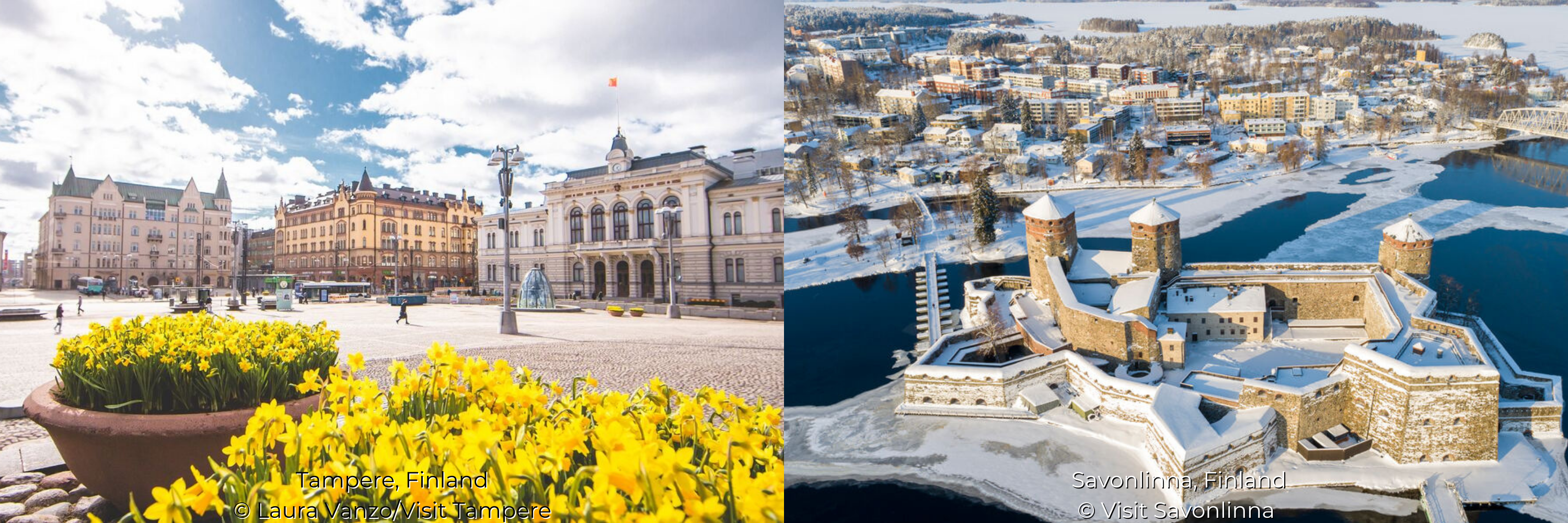
What does sustainability really mean in a culinary Finnish context? I ask chef Sasu Laukkonen, whose endeavours have included earning a Michelin star for his much-loved former Helsinki venue Oro. “It means fully exploiting the abundance and purity of local ingredients. And we have the potential to be even more self-sufficient with our own raw materials.”
Most of the items on the national menu can be enjoyed right across the country, but there are plenty of regional variations and specialities. For instance, the original home of the ubiquitous Karelian pie – a potato-filled flap of rye-based pastry – is in the eastern region of Karelia straddling the border with Russia. Crisp deep-fried muikku – vendace – fished from the sprawling eastern lakes of Saimaa can also be sampled in restaurants elsewhere.

In Kuopio’s bustling market hall in the Savo region, look out for kalakukko, made from vendace or perch baked in a rye bread casing. Mämmi, a rye porridge, has roots in southwest Finland but is a popular Easter dish everywhere. Rye, by the way, is a favoured, plentiful and very sustainably farmed grain of choice for bread across the country: there are few things more delicious than fresh, oven-warm Finnish rye bread generously embellished with butter.
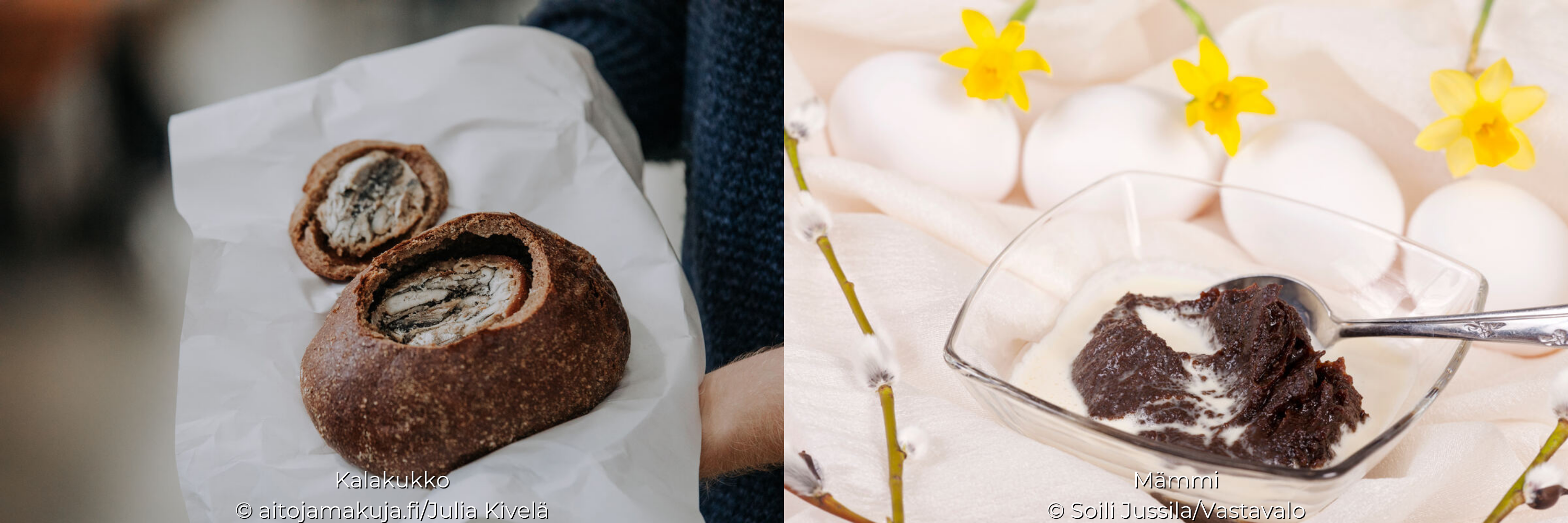
A unique Finnish convention known as jokaisenoikeudet – every person’s rights – allows residents and visitors to freely roam and forage in the forests of mainly pine, spruce and birch that carpet three-quarters of the country. The rewards for taking advantage of this, not least in one of Finland’s 41 National Parks and depending on the season, include overflowing baskets of chanterelles and cep (boletus) mushrooms, as well as limitless blueberries, lingonberries and orange marshland cloudberries. With the mushrooms especially, you need to know what you’re picking and how to cook them, but there are more edible varieties than you might suppose.
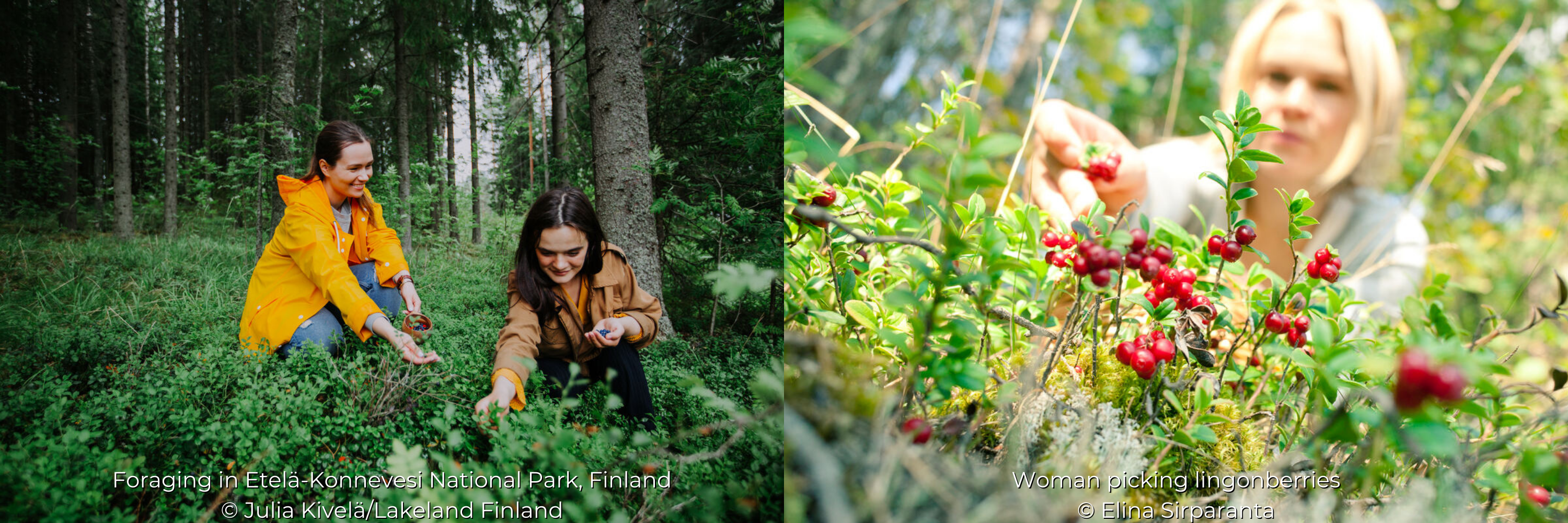
Foraging for wild herbs and foliage, from birch leaves and juniper to dandelion and nettle, is an ancient tradition that’s back in fashion for many chefs as well as in homes. They might be used to add zest to any of the different fish that populate Finland’s lakes, rivers and shorelines, such as salmon, whitefish, perch, pike, pike-perch (zander) and Baltic herring. Vegetarians are well catered for by plentifully farmed potatoes and other root vegetables, farmed organically, but might want to look away if I mention elk, hunted sustainably during the autumn season. Reindeer served in a lean, protein-rich stew or as steaks, is a staple further north, especially in the Lapland province, where the animal outnumbers people.
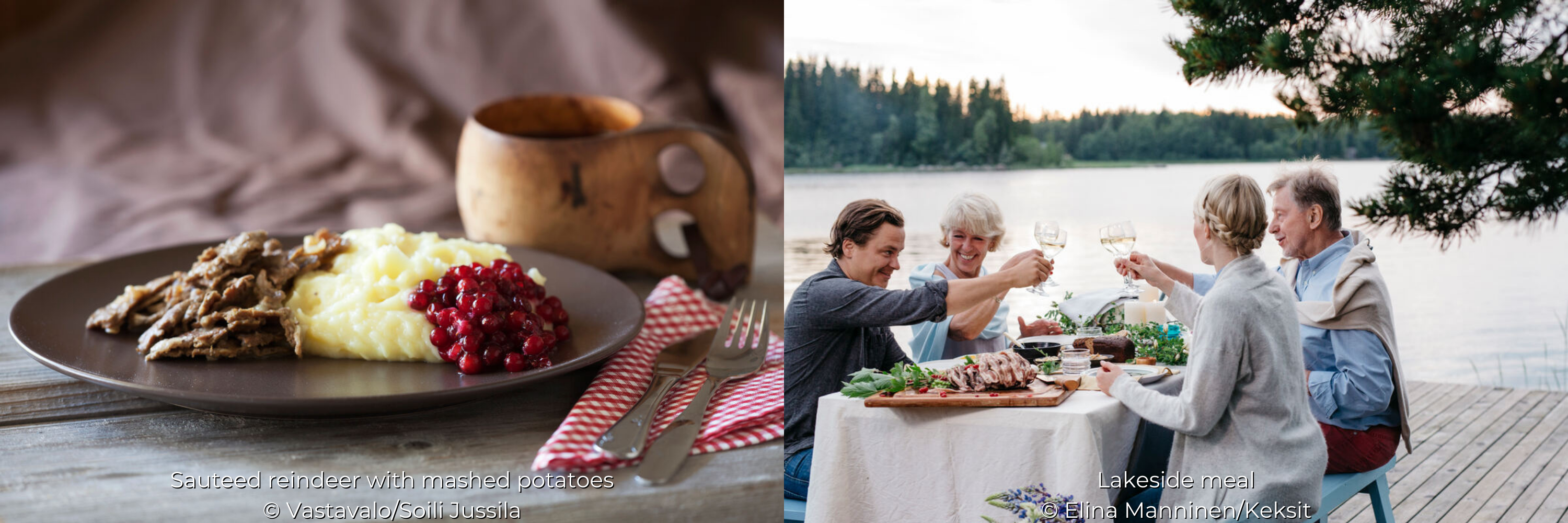
Local sources provide beverages to wash down these edible riches. Kuopio-based Lignell & Piispanen have produced berry-based liqueurs since 1919, while several distilleries have emerged in recent years, including the award-winning makers of premium single-batch rye whisky, Kyrö.
Chef Laukkonen is enthused by the plethora of local raw ingredients. “In the right season, it’s possible to gather quickly what’s needed for a great meal within a 10-kilometer radius of Helsinki, for example, from our forests, rivers and farms. That’s unusual, and something to be proud of!”
Feeling inspired? Experience the magic for yourself by booking one of our Sustainable Journeys.
Editorial submission – 11th January 2023

